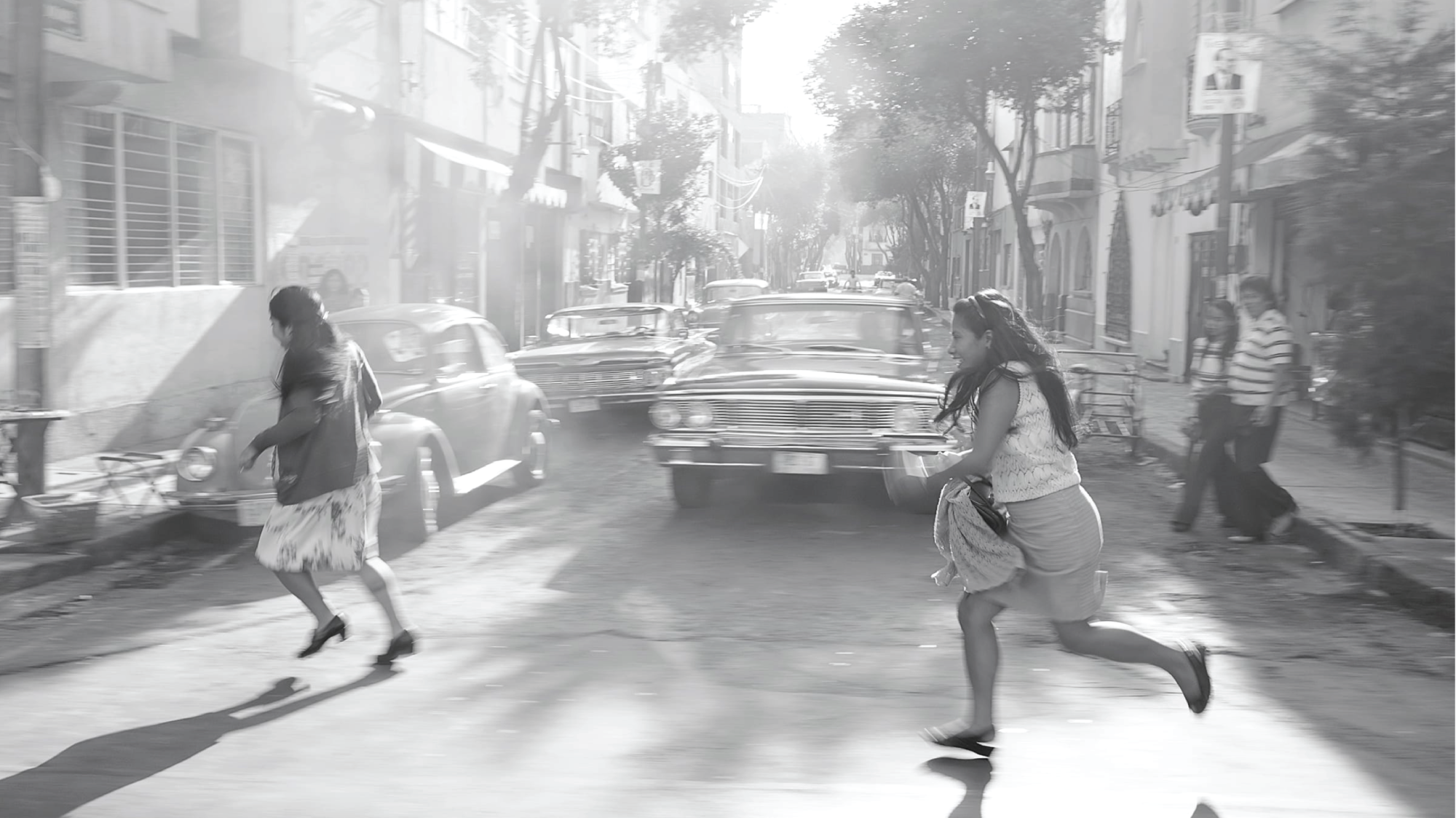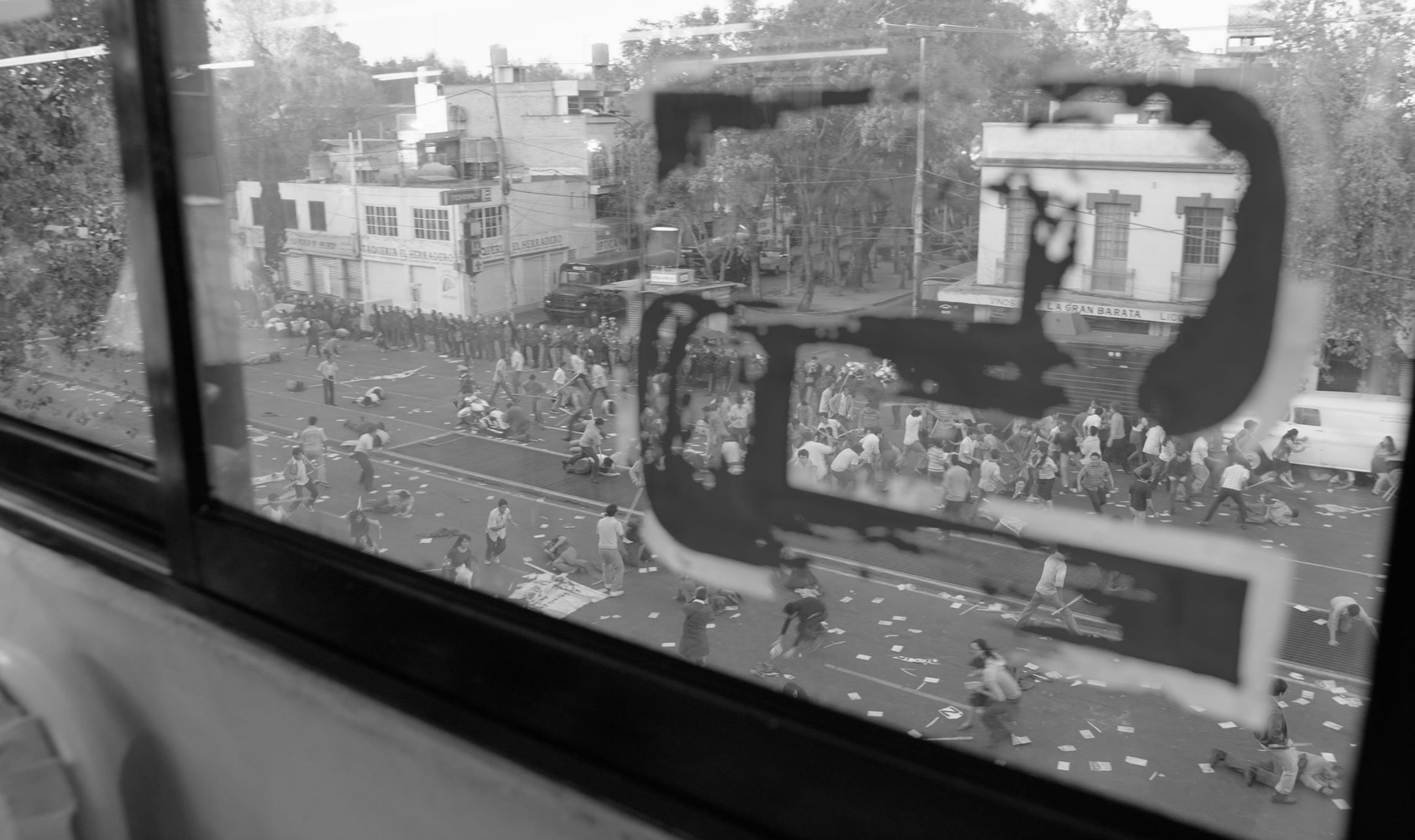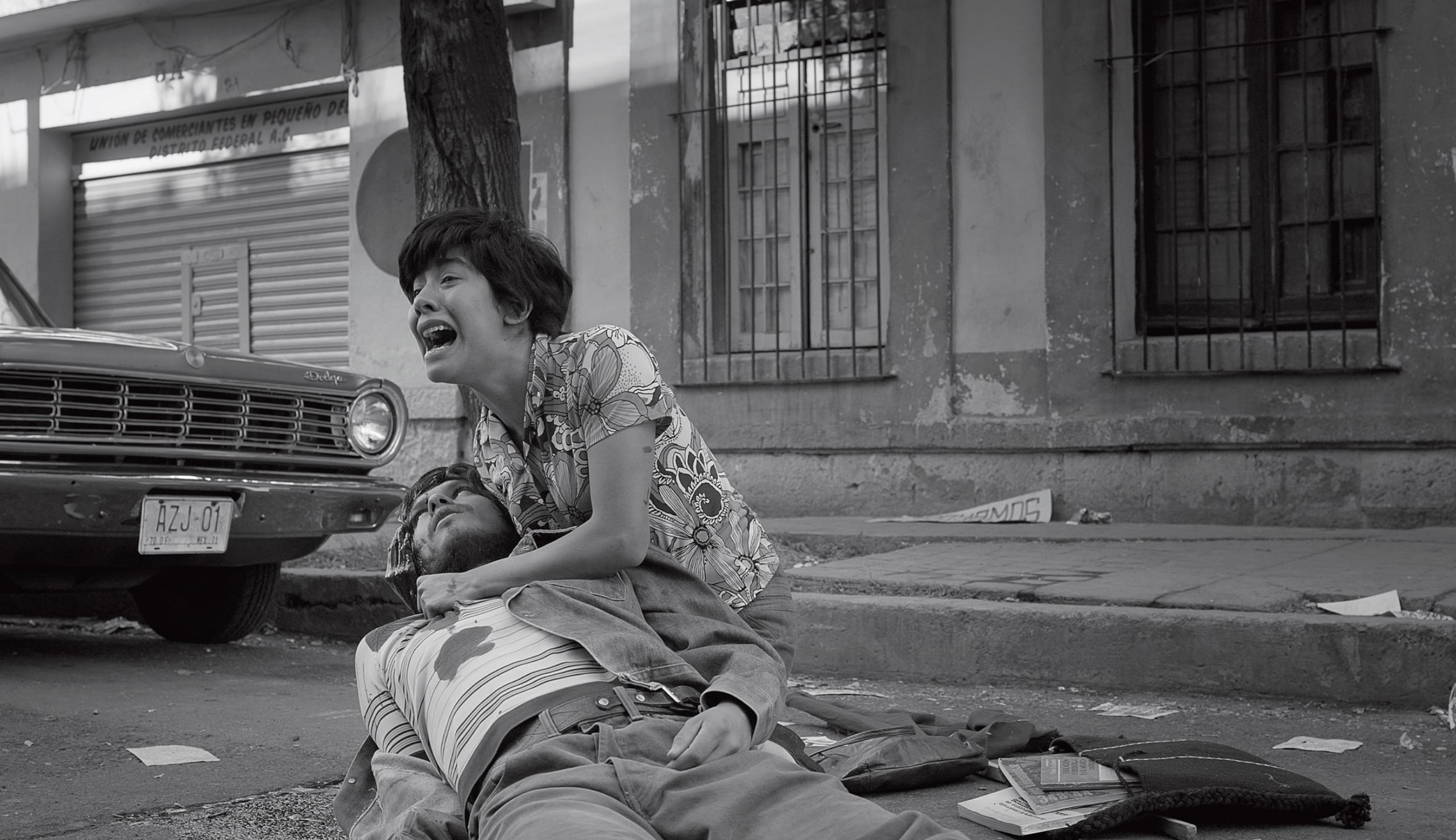On Films I Love or Will Likely Love

If you were born in Mexico City in the second half of the twentieth century, you grew up feeling that everything could come tumbling down in a matter of minutes. You grew up amid the reverberation of past earthquakes—all their emotional aftershocks—and learned to live with the presentiment of future ones. You knew that right there, where there was now a gap, was once a home, a hospital, a church. You learned that the stones of Mexican ruins were used to build the first colonial buildings, and the ruins of those, to build the neocolonial ones: the practice of repurposing ruins, always a rule and not an exception. You grew up sensing the push and pull of the lacustrine substrates under the pavement (the city was, once upon a precolonial time, a series of interconnected lakes), and so you walked along sidewalks where some slabs had swollen and curved like solidified waves and some others had cracked and burst into a beautiful pile of rubble, roots, and mud. Roma dismantles that fragile, ever-shifting, almost liquid place—and puts it back together slowly, tenderly, with a nostalgia that is never sentimental.
You probably also grew into the feeling that maybe it should, indeed, all tumble down. You grew up knowing that, despite the tight grip of the seventy-plus-year rule of the PRI (Institutional Revolutionary Party) and its production line of authoritarian statesmen and petty politicos, there was a fundamental unsustainability to it all: the student massacres, the legalized crime of seizing native land, the electoral frauds, the programs, and then the programs to make up for the programs that fucked up. All the pyrotechnics that foregrounded mediocrity and corruption. You grew up in the hypocrisy of the middle- and upper-class simulacrum of modernity, while a majority starved and was systematically relegated to the margins. You belonged to a space where women, and especially indigenous and mestiza women, provided the glue that kept the world together yet were always kept invisible and inaudible. Roma captures that unbearable, uninhabitable space—and portrays it ruthlessly, honestly, with a critical eye that is never self-indulgent.
“Roma is a visual document of the absurd everydayness and everythingness of life in a moment in which the world was shifting but none of us had yet noticed.”

If you were born in this time and place, you may as well have grown up in Beirut, Memphis, Mumbai, Palermo, or Johannesburg. Roma captures an intimate, unique time and space—and in doing so, reaches deep into our shared experience of personal and political history. Roma is, first of all, a soundscape of the oldest city in the Americas. It’s an archive of its everyday sounds: car and bus engines, dog claws ticking across patios, the spark of a stove burner, a conversation during breakfast, the garbage-truck bell, multitudes congregating outside a cinema, a military band marching past, a phone ringing, children being prayed into sleep and sung into wakefulness, the radio, the camote vendor, airplanes, a student protest, more airplanes, the television, people breathing, people talking, couples fighting, couples falling silent, women giving birth, a boy weeping, “No matter what they say, we women are always alone,” clocks and birds, dog barks, and a street honey vendor—“Miel de colmena, miel de colmena.”
Roma is also, quite simply, a visual document of the absurd everydayness and everythingness of life in a moment in which the world was shifting but none of us had yet noticed. Public hospitals; upper-middle-class homes; tongue-kissing in a dimly lit cinema; a sculptural naked man performing martial-arts moves in a hotel room with a shower-curtain rod before the skeptical, almost teasing young gaze of his girlfriend; oatmeal being prepared; records playing in a room full of modestly and not so modestly drunken adults at a New Year’s Eve party; people shooting guns because . . . because they can; a boy dressed in an astronaut suit walking through the forest; a fire, its flames rising; a working-class boy using a bucket as an astronaut helmet and walking through a wasteland; a passenger bus nicknamed Soledad (Solitude) pulling over to let people out onto an unpaved street; Luis Echeverría posters, T-shirts, murals—Luis Echeverría everywhere; tepache vendors; ceramic pulque bowls shattering; ducks fucking; the big, baggy pachuco pants of men accustomed to aguardiente and toilsome labor; desiccated dogs; a car too big, a car too small, and a family road trip; a giant fiberglass crab under which a beautiful new tribe licks ice-cream cones; the unforgiving tides of the Gulf of Mexico; a boy softly resting his head against a car window; the tight little ass of a television hero making a public appearance in a soccer field where young men practice martial arts; a student protest; students assassinated; a stillborn baby.

“Alfonso Cuarón, you got eyes. But also: You got ears. And got a soul as old as los cerros.”
Roma is a revolution, but one that is quiet, internal, slow, and subtle. And for that, it will be remembered as a definitive testimony of our times. It’s an examination in hindsight—full of sadness and humor—of all that was normalized and is no longer tolerable or even acceptable. There’s the blurring of borders between lives normally neatly packed into socioeconomic niches: master and servant, he and she—who is who, and why? There’s an overturning of narratives, in which children, through their peculiar gaze, get to make the final version of their parents’ story. There’s the portrayal of a decadent, almost ridiculous masculinity: absent fathers, narcissistic and cowardly lovers, pusillanimous decision makers, abusive partners—alas, testosterone and its trail of debris. There’s a restitution of a female space of observation and enunciation. And there’s a spatial paradigm shift that upturns the usual way in which we focus—center vs. periphery; upstairs vs. downstairs; inside vs. outside.
The film begins with an image of the ground, a patio, where Cleo, the protagonist and beating heart of the story, cleans and sweeps an archipelago of dog shit every day. The eye of the camera makes its way around a house, upstairs, downstairs, the dining table and the kitchen; then in and out of the house, the city sidewalks, its buzzing streets; in and out of hospitals, cinemas, and hotel rooms; then out into the periphery of the city, then farther out into the countryside, and then even farther out to the geographical limits of the country, to the western coastline of the Gulf of Mexico, its tides pulling and waters churning. Finally, the eye returns to the patio that Cleo cleans—its own waters churning before slipping into the drain—and then pans up toward the azotea, or rooftop (a shot reminiscent of [Edward] Weston’s, [Tina] Modotti’s, or [Martin] Munkacsi’s photos of Mexican rooftops). Azoteas are a signature heterotopic or “other” space of Mexico City life. Elevated and enclosed by parapet walls, they are spaces that are both inside and outside, both visible and invisible, and they are where the rebirth of everydayness takes place: cleaning, washing, line-drying; but also loitering, voyeuring, transgressing norms, breaking moral and aesthetic codes. The visual and narrative arc, a 180-degree revolution from patio to azotea, leaves us staring into a wide-open sky.
Repurposing Jack Kerouac’s words from his introduction to Robert Frank’s photographic collection The Americans, I’d say this: Alfonso Cuarón, you got eyes. But also: You got ears. And got a soul as old as los cerros.
There is something about Roma—it produces a reverberation, it lingers inside you, way after the movie has ended. It’s very much a mirror of the city it portrays: an emotional earthquake, a world about to shatter, something about to end—but that doesn’t, because it’s all held together by the equilibrium, tenderness, and strength of a woman who can stand on one leg with her eyes closed.
New York City, 2018
Roma had 252 wins and 211 nominations in 2019, including: